(Page créée avec « Solar distilator ») |
(update property name) |
||
| (28 révisions intermédiaires par 3 utilisateurs non affichées) | |||
| Ligne 1 : | Ligne 1 : | ||
| − | {{ | + | {{Tuto Details |
|SourceLanguage=fr | |SourceLanguage=fr | ||
|Language=en | |Language=en | ||
| Ligne 5 : | Ligne 5 : | ||
|Type=Prototype | |Type=Prototype | ||
|Area=Food, Water, Energy | |Area=Food, Water, Energy | ||
| − | |Tags=Eau de mer, sel, évaporation, | + | |Tags=Eau de mer, sel, évaporation, NomadeDesMers |
| − | |Description= | + | |Description=A cloth impregnated with seawater is wedged between two frames on which transparent sheets have been stretched. Thanks to the sun and two reflectors made with a cover of survival, the water of the fabric will evaporate then come to trickle on the baches, while the salt will remain trapped by the fabric. The desalinated water flows down the frames and is collected in a can with two pipes. At the bottom of the frames, waterproofness is essential to the proper functioning of the desalinator. |
|Difficulty=Medium | |Difficulty=Medium | ||
|Cost=20 | |Cost=20 | ||
| Ligne 17 : | Ligne 17 : | ||
|IsTranslation=1 | |IsTranslation=1 | ||
}} | }} | ||
| − | {{ | + | {{Introduction |
|Introduction= | |Introduction= | ||
}} | }} | ||
| − | {{ | + | {{Materials |
| − | |Material=* | + | |Material=* Wooden cleats (used in this tutorial: 44 * 22mm) |
| − | * | + | * Small plastic tube diameter 5 or 6 mm |
| − | * | + | * Two bottles of 5 or 6 liters |
| − | * | + | * Strong and transparent plastic tarpaulin |
| − | * | + | * Cotton fabric |
| − | * | + | * Blanket |
| − | * | + | * Wood screws |
| − | * | + | * Inner tube |
| − | |Tools=* | + | |Tools=* Screwdriver or screwdriver |
| − | * | + | * Drill and drills |
| − | * | + | * Handsaw |
| − | * | + | * Tapestry stapler |
| − | * | + | * Neoprene glue |
}} | }} | ||
| − | {{ | + | {{Separator}} |
| − | {{ | + | {{Tuto Step |
|Step_Picture_00=D_salinisateur_solaire_IMG_6621.JPG | |Step_Picture_00=D_salinisateur_solaire_IMG_6621.JPG | ||
|Step_Picture_01=D_salinisateur_solaire_IMG_6619.JPG | |Step_Picture_01=D_salinisateur_solaire_IMG_6619.JPG | ||
| − | |Step_Title= | + | |Step_Title=Manufacture of freshwater recovery frames |
| − | |Step_Content= | + | |Step_Content=For this model, the chosen floor area is 110 cm horizontal by 66 cm vertical. The wooden battens used have a section of 44 mm by 22 mm. The thickness of the frame is 44 mm. The frame is assembled with screws. At about 10 centimeters from the bottom of the frame, a cleat is added, as can be seen in the picture. It makes it possible to stiffen the frame, to stretch the sheet and to separate the freshwater and seawater parts (no risk of salt contamination). |
}} | }} | ||
| − | {{ | + | {{Tuto Step |
| − | |Step_Title= | + | |Step_Title=Laying the tarpaulin on the freshwater recovery frames. |
| − | |Step_Content= | + | |Step_Content=The tarpaulin should extend about 10 centimeters on each side of the frame, to ensure effective stapling and tension. Begin by stapling the tarpaulin on the separation strip as shown in the diagram (diagram to be added). The tarpaulin should then surround the lower part of the frame and go up, without any staple less than 7 or 8 centimeters from the bottom, at the risk of having water leaks. It will bend the overflowing plastic and staple so as to ensure a tight tank at the bottom of the frame. Finally, cover the panel of the whole tarpaulin and stretch it as much as possible by stapling it inside the frame. Repeat these operations for the second frame. |
}} | }} | ||
| − | {{ | + | {{Tuto Step |
|Step_Picture_00=D_salinisateur_solaire_IMG_6683.JPG | |Step_Picture_00=D_salinisateur_solaire_IMG_6683.JPG | ||
| − | |Step_Title= | + | |Step_Title=Drilling the evacuation of fresh water. |
| − | |Step_Content= | + | |Step_Content=Choose a lower corner of the frames to drill through the tarpaulin and wood a hole of diameter slightly smaller than the diameter of the tube you have. This tube will be forced into the hole and through a patch in air chamber which has the role of making a tight connection between the pipe and the cover (the hole drilled in the air chamber is much smaller than the tube, that is forced back into the air chamber). The patch will be glued to the tarpaulin with neoprene glue. The two pipes thus fixed to the frame will open into the freshwater recovery bottle. We will take care to make a hole in the cap of this bottle to allow a good flow. Both pipes pass through the cap. Plan to secure the two tubes to avoid pulling on the inner tube patches while handling the desalinator. |
}} | }} | ||
| − | {{ | + | {{Tuto Step |
|Step_Picture_00=D_salinisateur_solaire_IMG_6682.JPG | |Step_Picture_00=D_salinisateur_solaire_IMG_6682.JPG | ||
| − | |Step_Title= | + | |Step_Title=Manufacture of solar reflectors |
| − | |Step_Content= | + | |Step_Content=Make two frames of the same dimensions as the previous ones, but without the reinforcement. Tense and staple the survival blanket and the tarpaulin on the frame. The tarp serves to protect the survival blanket, which is fragile. This is the silver side of the cover that will face the sun! |
}} | }} | ||
| − | {{ | + | {{Tuto Step |
|Step_Picture_00=D_salinisateur_solaire_IMG_6681.JPG | |Step_Picture_00=D_salinisateur_solaire_IMG_6681.JPG | ||
| − | |Step_Title= | + | |Step_Title=Assembly |
| − | |Step_Content= | + | |Step_Content=Staple the fabric stretched over one of the two freshwater recovery frames, without the sides touching the vertical edges of the frame. The fabric is stapled between the top of the frame and the reinforcement! Be careful not to make a hole in the bottom of the frame! Secure the two frames facing each other by enclosing the fabric in between. Allow 10 centimeters of fabric exceed at the bottom and top of the frames. Provide feet to keep the desalinator up. Finally, fix the reflectors to the whole so that you can tilt them according to the height of the sun. They will be held in position using twine. |
}} | }} | ||
| − | {{ | + | {{Tuto Step |
|Step_Picture_00=D_salinisateur_solaire_IMG_6684.JPG | |Step_Picture_00=D_salinisateur_solaire_IMG_6684.JPG | ||
| − | |Step_Title= | + | |Step_Title=Making the sea water input |
| − | |Step_Content= | + | |Step_Content=Drill a pipe every 4 centimeters using a sewing needle along the entire length of the desalinator. At the end of this pipe, provide a tap that will siphon the arrival of seawater. At the other end, this pipe is drowned to the bottom in a bottle of seawater, located higher than the desalinator so that the flow can be done. Provide a tap at the outlet of the seawater bottle to adjust the flow. The pierced portion of the seawater inlet tube is wrapped in the fabric protruding above the frames, thus, all seawater will be trapped by the fabric. |
| − | + | Put the desalinator in the sun, open the reflectors, siphon the sea water, and observe the condensation inside the tarpaulins! Pretty soon, fresh water should flow down the frames and fill the bottle! Slightly bend the desalinator with wedges so that fresh water flows gently to the evacuations. | |
}} | }} | ||
| − | {{ | + | {{Tuto Step |
| − | |Step_Title= | + | |Step_Title=Use |
| − | |Step_Content= | + | |Step_Content=Open your tap, the water from the sea water bottle will flow through the pipe. As it exits through the holes drilled in the pipe, it will be absorbed by the fabric. The salt water will spread into the fabric inside the system. |
| − | + | ||
| − | + | With the effect of the sun, the inside of the desalinator will heat up and cause the water to evaporate from the fabric. Only the water will evaporate, the tissue will keep the salt. | |
| − | + | ||
| + | By coming to touch the walls of the frame, the water will recondense and flow along the sheet. When it reaches the bottom of the walls it will flow along the lower part of the frame and be collected in the fresh water drain pipe. | ||
| + | |||
| + | You will find fresh water in your bottle. | ||
| + | |||
| + | Attention the water, although desalinated, is not drinkable. During the evaporation process it was demineralized. It is therefore important to add a few drops of sea water to restore the necessary minerals. | ||
| + | |||
| + | Also, if the sea water used in the process is not clean, your fresh water will not be clean either. It is therefore essential to filter it in order to make it potable. | ||
}} | }} | ||
| − | {{ | + | {{Tuto Step |
| − | | | + | |Step_Title=Remarks |
| + | |Step_Content=This low-tech is currently in full test. The points tested are the following: | ||
| + | - optimal position of the desalinator and reflectors in relation to the sun | ||
| + | - efficient collection of fresh water | ||
| + | - adjustment of the seawater flow | ||
}} | }} | ||
| − | {{ {{ | + | {{Notes |
| + | |Notes=* Directed by Thomas Piboum and Karel Janik for Nomad of the Seas. | ||
| + | }} | ||
| + | {{Tuto Status | ||
|Complete=Yes | |Complete=Yes | ||
}} | }} | ||
Version actuelle datée du 22 octobre 2019 à 15:05
Description
A cloth impregnated with seawater is wedged between two frames on which transparent sheets have been stretched. Thanks to the sun and two reflectors made with a cover of survival, the water of the fabric will evaporate then come to trickle on the baches, while the salt will remain trapped by the fabric. The desalinated water flows down the frames and is collected in a can with two pipes. At the bottom of the frames, waterproofness is essential to the proper functioning of the desalinator.
Sommaire
Sommaire
- 1 Description
- 2 Sommaire
- 3 Étape 1 - Manufacture of freshwater recovery frames
- 4 Étape 2 - Laying the tarpaulin on the freshwater recovery frames.
- 5 Étape 3 - Drilling the evacuation of fresh water.
- 6 Étape 4 - Manufacture of solar reflectors
- 7 Étape 5 - Assembly
- 8 Étape 6 - Making the sea water input
- 9 Étape 7 - Use
- 10 Étape 8 - Remarks
- 11 Notes et références
- 12 Commentaires
Matériaux
- Wooden cleats (used in this tutorial: 44 * 22mm)
- Small plastic tube diameter 5 or 6 mm
- Two bottles of 5 or 6 liters
- Strong and transparent plastic tarpaulin
- Cotton fabric
- Blanket
- Wood screws
- Inner tube
Outils
- Screwdriver or screwdriver
- Drill and drills
- Handsaw
- Tapestry stapler
- Neoprene glue
Étape 1 - Manufacture of freshwater recovery frames
For this model, the chosen floor area is 110 cm horizontal by 66 cm vertical. The wooden battens used have a section of 44 mm by 22 mm. The thickness of the frame is 44 mm. The frame is assembled with screws. At about 10 centimeters from the bottom of the frame, a cleat is added, as can be seen in the picture. It makes it possible to stiffen the frame, to stretch the sheet and to separate the freshwater and seawater parts (no risk of salt contamination).
Étape 2 - Laying the tarpaulin on the freshwater recovery frames.
The tarpaulin should extend about 10 centimeters on each side of the frame, to ensure effective stapling and tension. Begin by stapling the tarpaulin on the separation strip as shown in the diagram (diagram to be added). The tarpaulin should then surround the lower part of the frame and go up, without any staple less than 7 or 8 centimeters from the bottom, at the risk of having water leaks. It will bend the overflowing plastic and staple so as to ensure a tight tank at the bottom of the frame. Finally, cover the panel of the whole tarpaulin and stretch it as much as possible by stapling it inside the frame. Repeat these operations for the second frame.
Étape 3 - Drilling the evacuation of fresh water.
Choose a lower corner of the frames to drill through the tarpaulin and wood a hole of diameter slightly smaller than the diameter of the tube you have. This tube will be forced into the hole and through a patch in air chamber which has the role of making a tight connection between the pipe and the cover (the hole drilled in the air chamber is much smaller than the tube, that is forced back into the air chamber). The patch will be glued to the tarpaulin with neoprene glue. The two pipes thus fixed to the frame will open into the freshwater recovery bottle. We will take care to make a hole in the cap of this bottle to allow a good flow. Both pipes pass through the cap. Plan to secure the two tubes to avoid pulling on the inner tube patches while handling the desalinator.
Étape 4 - Manufacture of solar reflectors
Make two frames of the same dimensions as the previous ones, but without the reinforcement. Tense and staple the survival blanket and the tarpaulin on the frame. The tarp serves to protect the survival blanket, which is fragile. This is the silver side of the cover that will face the sun!
Étape 5 - Assembly
Staple the fabric stretched over one of the two freshwater recovery frames, without the sides touching the vertical edges of the frame. The fabric is stapled between the top of the frame and the reinforcement! Be careful not to make a hole in the bottom of the frame! Secure the two frames facing each other by enclosing the fabric in between. Allow 10 centimeters of fabric exceed at the bottom and top of the frames. Provide feet to keep the desalinator up. Finally, fix the reflectors to the whole so that you can tilt them according to the height of the sun. They will be held in position using twine.
Étape 6 - Making the sea water input
Drill a pipe every 4 centimeters using a sewing needle along the entire length of the desalinator. At the end of this pipe, provide a tap that will siphon the arrival of seawater. At the other end, this pipe is drowned to the bottom in a bottle of seawater, located higher than the desalinator so that the flow can be done. Provide a tap at the outlet of the seawater bottle to adjust the flow. The pierced portion of the seawater inlet tube is wrapped in the fabric protruding above the frames, thus, all seawater will be trapped by the fabric. Put the desalinator in the sun, open the reflectors, siphon the sea water, and observe the condensation inside the tarpaulins! Pretty soon, fresh water should flow down the frames and fill the bottle! Slightly bend the desalinator with wedges so that fresh water flows gently to the evacuations.
Étape 7 - Use
Open your tap, the water from the sea water bottle will flow through the pipe. As it exits through the holes drilled in the pipe, it will be absorbed by the fabric. The salt water will spread into the fabric inside the system.
With the effect of the sun, the inside of the desalinator will heat up and cause the water to evaporate from the fabric. Only the water will evaporate, the tissue will keep the salt.
By coming to touch the walls of the frame, the water will recondense and flow along the sheet. When it reaches the bottom of the walls it will flow along the lower part of the frame and be collected in the fresh water drain pipe.
You will find fresh water in your bottle.
Attention the water, although desalinated, is not drinkable. During the evaporation process it was demineralized. It is therefore important to add a few drops of sea water to restore the necessary minerals.
Also, if the sea water used in the process is not clean, your fresh water will not be clean either. It is therefore essential to filter it in order to make it potable.
Étape 8 - Remarks
This low-tech is currently in full test. The points tested are the following: - optimal position of the desalinator and reflectors in relation to the sun - efficient collection of fresh water - adjustment of the seawater flow
Notes et références
- Directed by Thomas Piboum and Karel Janik for Nomad of the Seas.
Yes
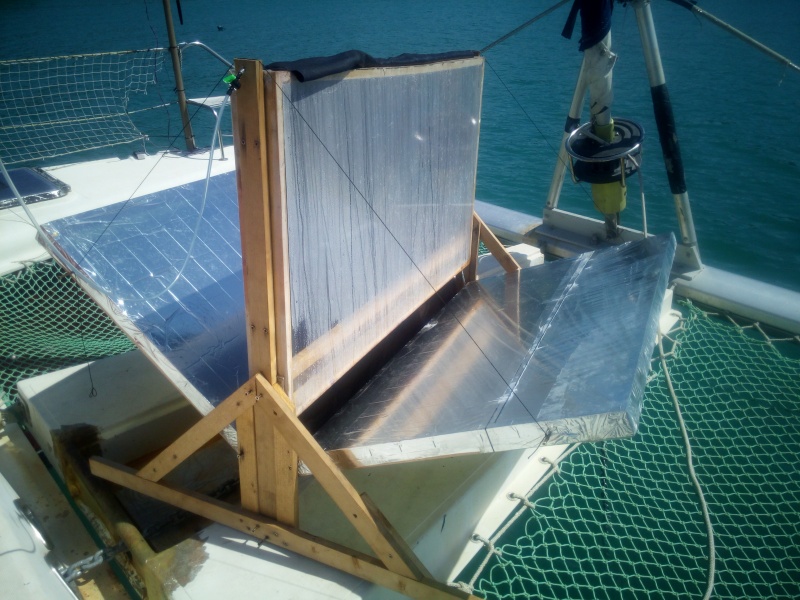
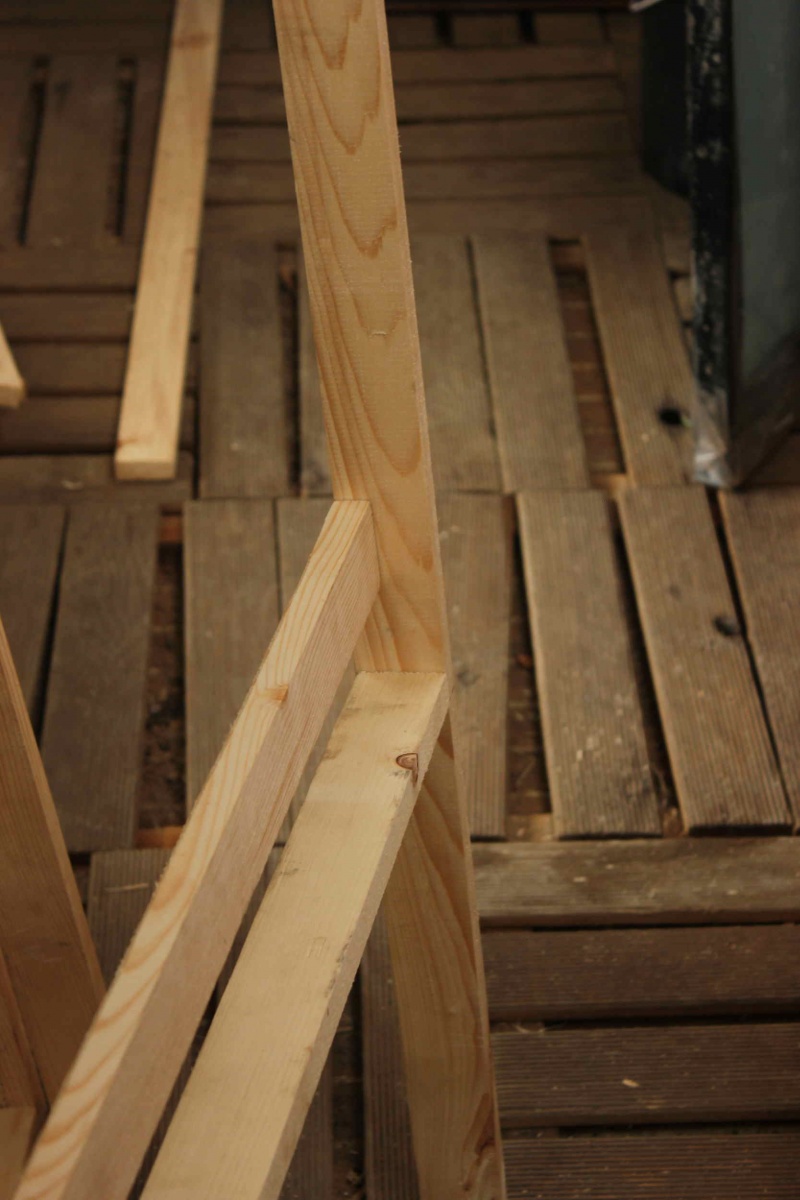
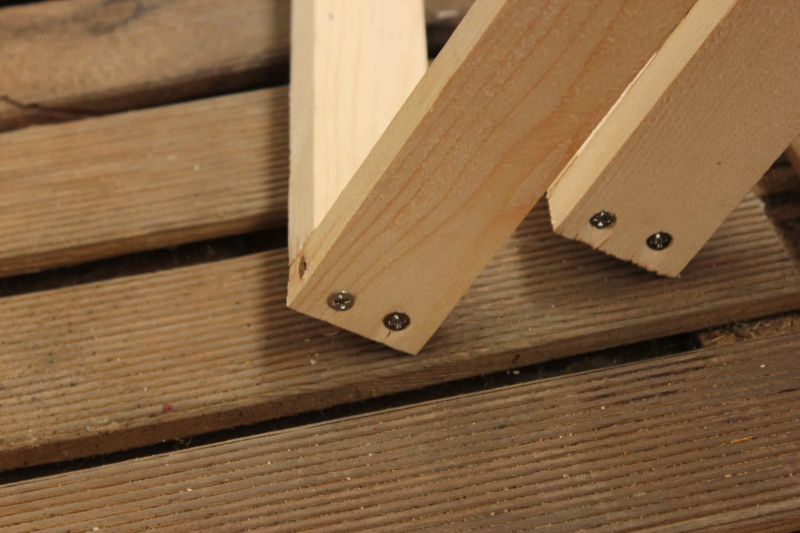
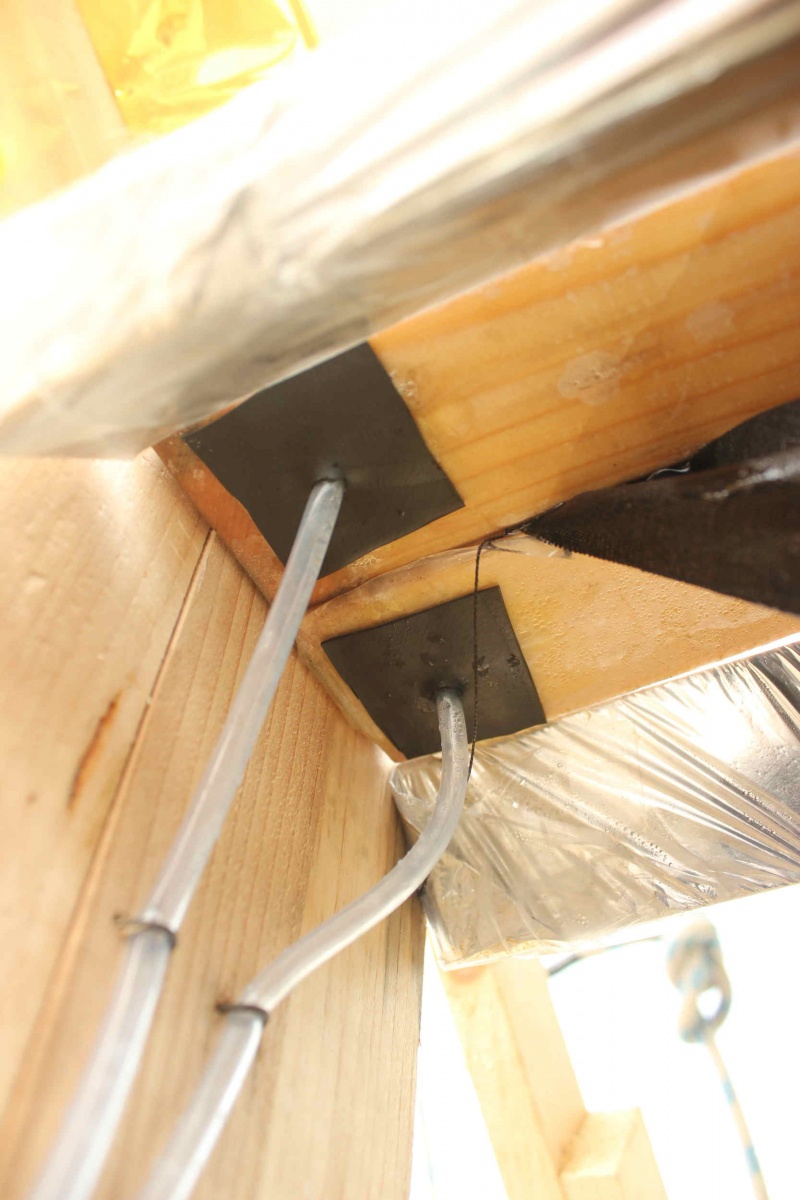
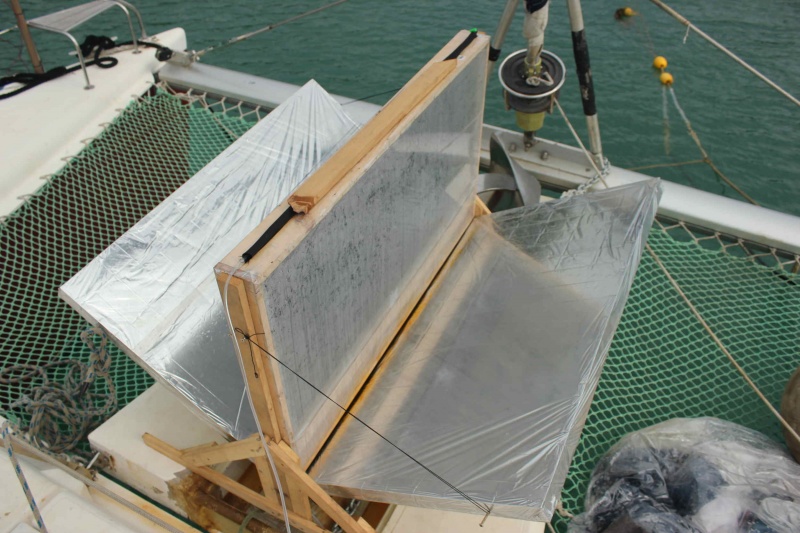
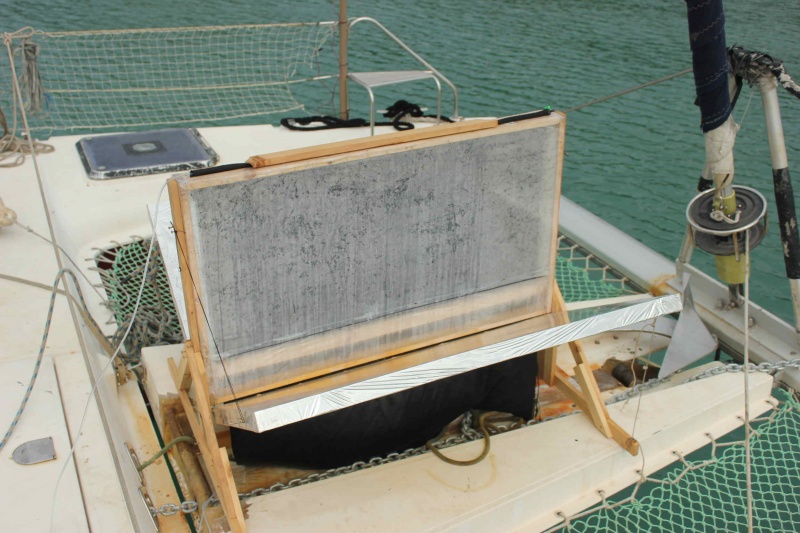
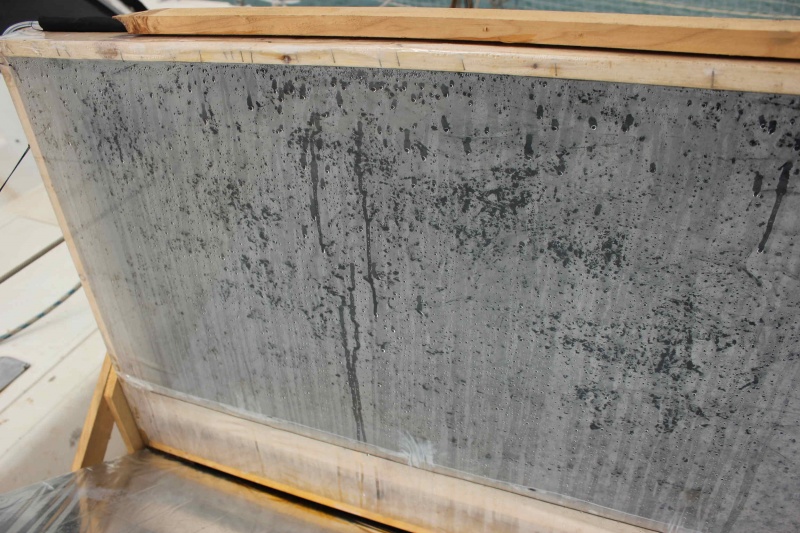
 Français
Français English
English Deutsch
Deutsch Español
Español Italiano
Italiano Português
Português